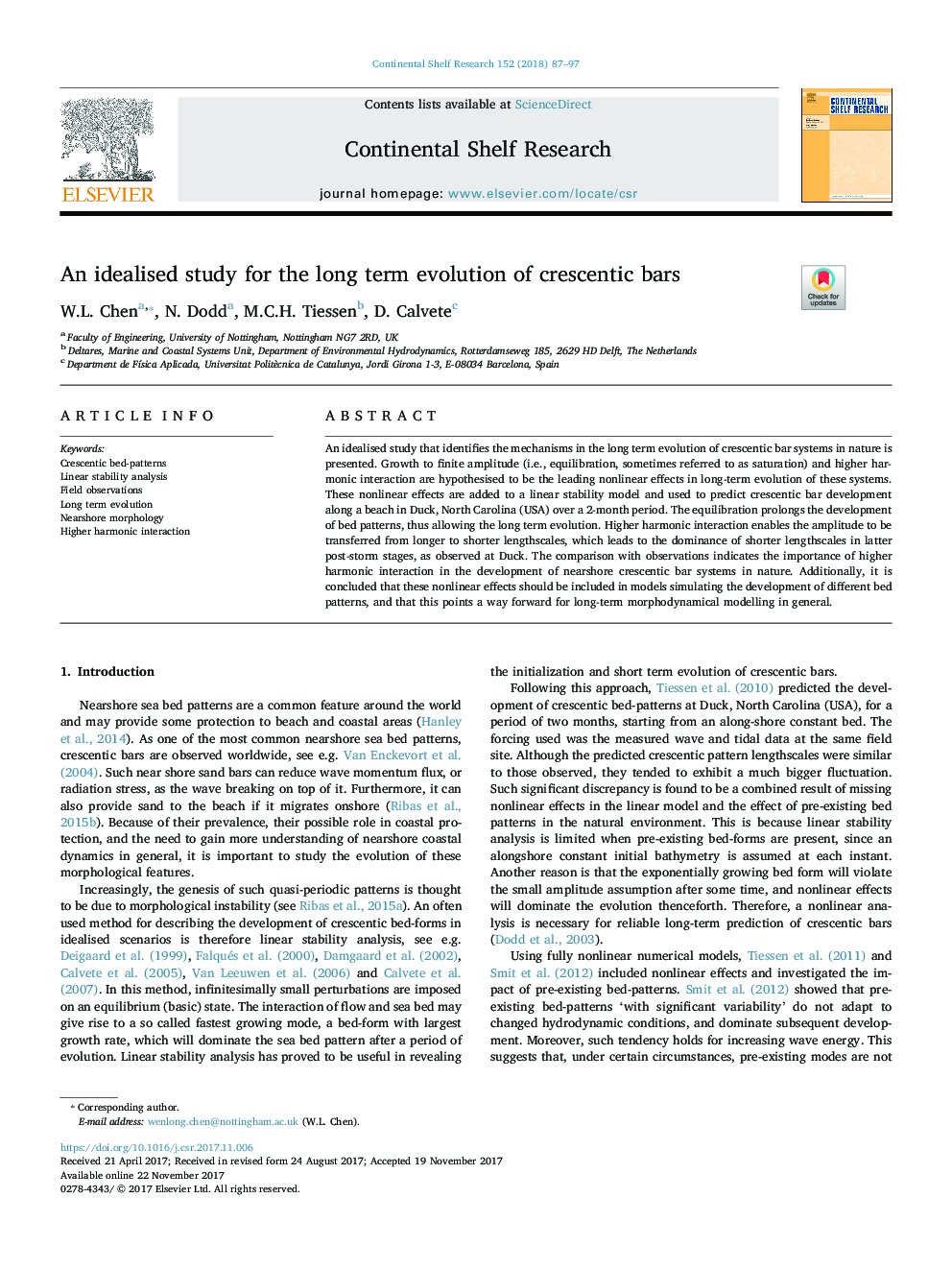| Article ID | Journal | Published Year | Pages | File Type |
|---|---|---|---|---|
| 8884115 | Continental Shelf Research | 2018 | 11 Pages |
Abstract
An idealised study that identifies the mechanisms in the long term evolution of crescentic bar systems in nature is presented. Growth to finite amplitude (i.e., equilibration, sometimes referred to as saturation) and higher harmonic interaction are hypothesised to be the leading nonlinear effects in long-term evolution of these systems. These nonlinear effects are added to a linear stability model and used to predict crescentic bar development along a beach in Duck, North Carolina (USA) over a 2-month period. The equilibration prolongs the development of bed patterns, thus allowing the long term evolution. Higher harmonic interaction enables the amplitude to be transferred from longer to shorter lengthscales, which leads to the dominance of shorter lengthscales in latter post-storm stages, as observed at Duck. The comparison with observations indicates the importance of higher harmonic interaction in the development of nearshore crescentic bar systems in nature. Additionally, it is concluded that these nonlinear effects should be included in models simulating the development of different bed patterns, and that this points a way forward for long-term morphodynamical modelling in general.
Related Topics
Physical Sciences and Engineering
Earth and Planetary Sciences
Geology
Authors
W.L. Chen, N. Dodd, M.C.H. Tiessen, D. Calvete,
